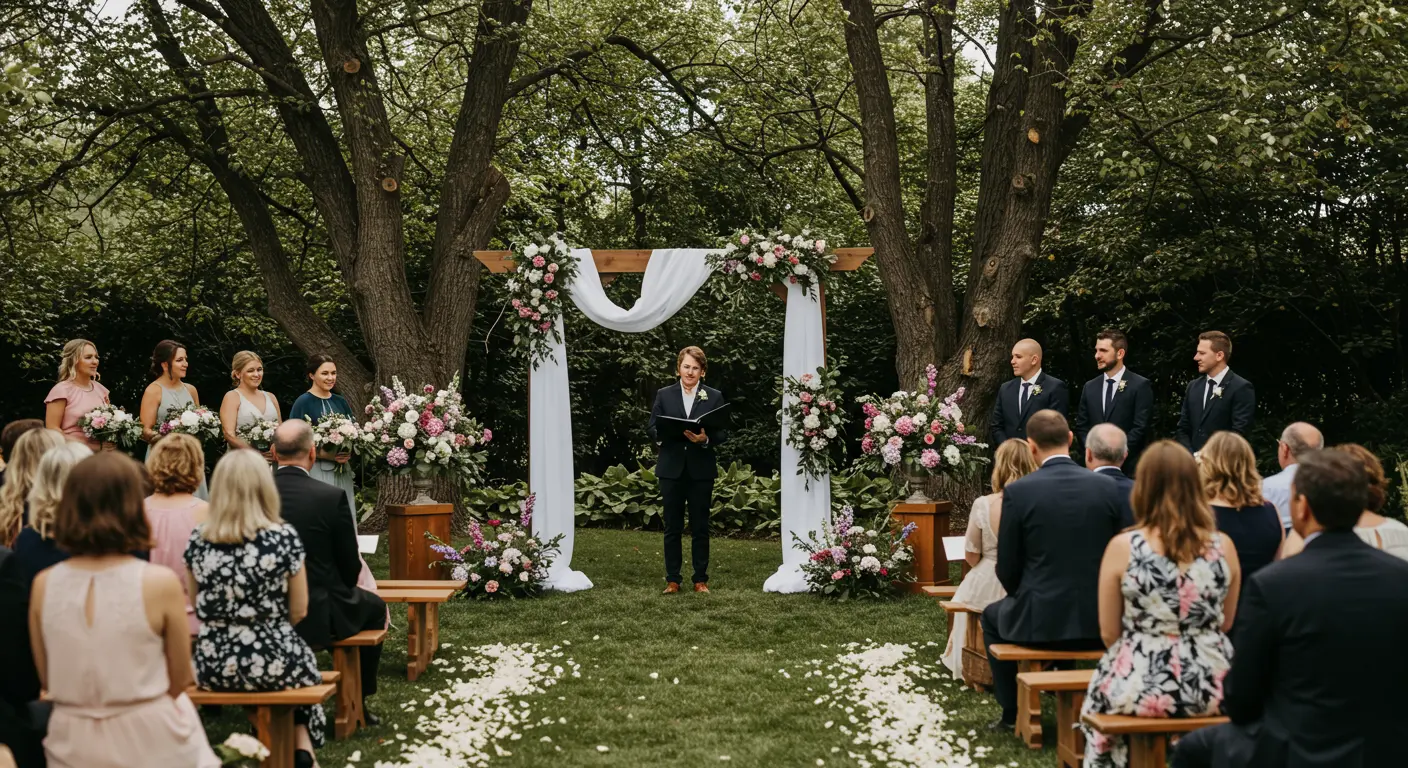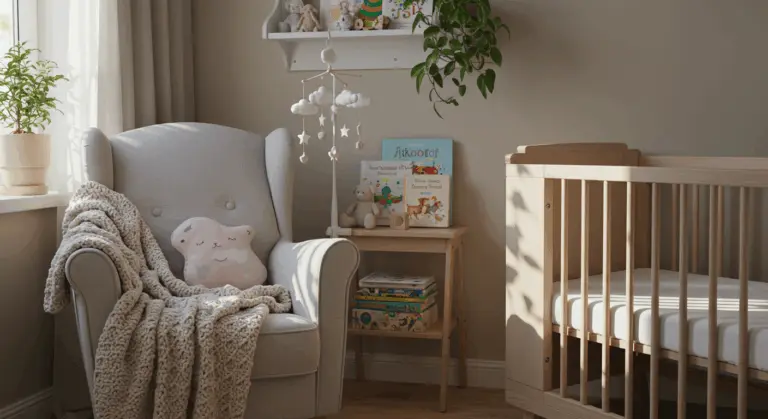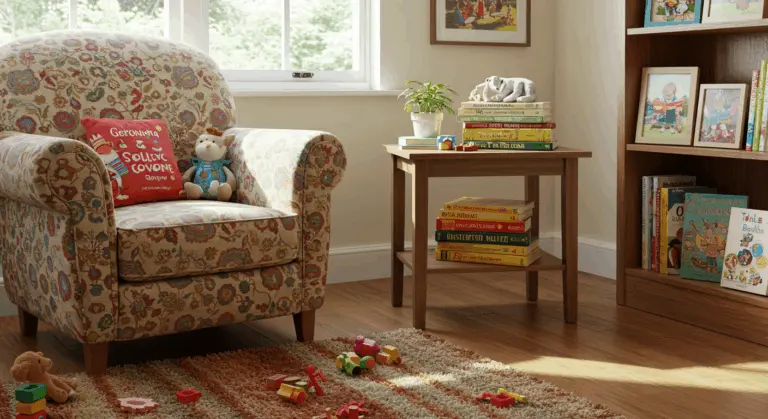What to Say When Officiating a Wedding – Complete Guide

Understanding the Role of an Officiant
As the wedding officiant, you carry a meaningful responsibility that extends far beyond mere speaking. You become the ceremonial guide, guiding the couple and their gathered loved ones through one of life’s most sacred rituals. Your role is To honor the couple’s deepest wishes while creating a smooth ceremony that resonates with exactly the emotional tone they envision.
From a legal standpoint, you serve as the authorized representative who formally unites the couple—a role demanding meticulous attention to jurisdictional requirements, proper documentation, and established protocols. But your role goes beyond paperwork; your very presence and carefully chosen words elevate the simple exchange of vows into something meaningful and memorable.
An experienced officiant does more than the basics, personalizing each ceremony to mirror the couple’s distinctive love story. This means thoughtfully including meaningful readings, cherished traditions, or intimate anecdotes throughout the service. This creates A celebration that feels authentically theirs—one that resonates deeply with both the couple and their witnesses.
Essential Elements of a Wedding Ceremony Script
A well-crafted script serves as your guide—it provides direction while leaving room for personalization. Though wedding styles span the spectrum, most successful scripts share fundamental elements that create structure. These building blocks become your foundation for customization.
Core components of a wedding script typically include:
-
Welcome Statement: Sets the tone for the ceremony.
-
Declaration of Intent: The couple confirms their desire to marry.
-
Exchange of Vows: The couple expresses their promises to one another.
-
Ring Exchange: Symbolizes their commitment.
-
Pronouncement: The official declaration of marriage.
Additional elements might include family blessings, readings, unity ceremonies, or a wedding address.
When creating your script, explore the couple’s religious convictions, cultural heritage, and personal preferences. Some couples want a traditional religious ceremony steeped in specific prayers and time-honored rituals. Others prefer secular celebrations that highlight their personal story. Today’s ceremonies embrace flexibility, allowing you to create a script that authentically reflects the couple’s relationship, core values, and shared vision for their future.
The Processional – Setting the Stage
The processional marks the ceremony’s beginning—a carefully orchestrated moment that establishes the emotional landscape for everything that follows. While you may not choreograph this entrance, understanding its importance is crucial to your role. During these opening moments, the wedding party and couple make their entrance and assume their positions with deliberate intention.
Music drives the processional, often shifting to herald different participants’ entrances and crescendoing to a climactic piece for the bride or couple’s grand arrival. The music is carefully planned to build anticipation and deliver emotional impact. Some couples embrace traditional processional arrangements, while others craft more personalized approaches that mirror their unique relationship dynamics.
You’ll typically take your position at the front, awaiting the wedding party’s arrival with quiet anticipation. Once everyone settles into place, the ceremony officially begins. Your aim is to Ensure a seamless transition into your welcome remarks, preserving the emotional atmosphere the processional has so carefully established.
Welcome and Opening Remarks
When the processional concludes, your opening words are very important—they set the entire ceremony’s tone. The welcome formally launches the proceedings, acknowledges the gathered witnesses, and establishes the occasion’s significance while creating an atmosphere of warmth and inclusion.
Begin with a warm, heartfelt greeting that embraces all assembled guests. Consider something like: “Welcome, family and friends. We gather here today to celebrate the love and commitment of [Partner A] and [Partner B], and to witness their union in marriage.” This is simple yet powerful statement establishes the gathering’s sacred purpose while acknowledging everyone as important witnesses. You might also recognize the parents or families, particularly if they’ve played pivotal roles in nurturing the couple’s relationship or bringing them together.
When appropriate, briefly introduce yourself and your connection to the couple, or share a thoughtful anecdote that illuminates their bond. Keep these opening remarks concise—your goal is to welcome guests warmly while building anticipation for the ceremony’s heart. Find the right balance of warmth and reverence.
Crafting Meaningful Wedding Vows
Wedding vows are the ceremony’s most important part—that pivotal moment when the couple voices their deepest promises and commitments to one another. As their officiant, you become their guide through this sacred process, whether they’re embracing traditional vows or crafting deeply personal ones. For couples writing original vows, encourage deep thought on their relationship’s essence. What makes their connection unique? Which promises feel most authentic and meaningful to their journey together?
For couples choosing traditional vows, help them understand the deep meaning behind these time-tested phrases. Traditional promises like “for better or worse, for richer or poorer, in sickness and in health” have endured precisely because they acknowledge marriage’s full spectrum of experiences. When guiding these vows during the ceremony, offer clear prompts and maintain a measured pace that allows each partner to repeat the words with genuine intention and understanding.
When couples craft personal vows, provide gentle guidance on length—typically one to two minutes works best—and tone. Encourage them to balance heartfelt emotion with concrete promises, perhaps including shared memories or tasteful inside references that won’t alienate guests. During the ceremony, introduce their personal vows with appropriate reverence. Allow ample time for delivery and offer gentle reassurance if emotions overwhelm them.
Incorporating Readings and Rituals
Readings and rituals add meaningful depth to wedding ceremonies and personalization, creating those unforgettable moments that reflect the couple’s values, cultural heritage, and shared vision for their future. As the officiant, you must seamlessly weave these elements into the ceremony’s natural flow, providing meaningful context for guests while guiding participants through each special moment with grace and understanding.
When incorporating readings, thoughtfully introduce each reader and their relationship to the couple—this personal connection adds weight to their words. Readings can come from many different sources: religious texts, classic literature, contemporary poetry, or even personal letters. Guide the couple toward passages that genuinely resonate with their worldview. The most powerful readings are those that authentically reflect their deepest values and beliefs.
Rituals offer powerful visual symbols of the couple’s union, creating moments that guests will remember long after the ceremony ends. When officiating these special elements, explain their symbolism to guests before guiding the couple through each step. Popular examples include:
The Pronouncement – Officially Married!
The pronouncement is the ceremony’s climax—that official, legally binding declaration that transforms two individuals into a married couple. Delivering this pivotal statement with the perfect blend of gravity and joy is one of your most important responsibilities as an officiant.
After the couple has exchanged heartfelt vows and rings, and any additional rituals have been lovingly completed, transition into the pronouncement with a brief but meaningful summary of the commitments just witnessed. For example: “[Partner A] and [Partner B], in the presence of your beloved family and friends, you have pledged to share your lives together in love, joy, respect, and understanding. We have all witnessed your commitment to each other today as you’ve spoken your vows and celebrated your love for one another.”
Next comes the moment everyone expects—the official pronouncement itself. While exact wording varies based on legal requirements and the couple’s preferences, a time-honored format flows like this: “By the power vested in me by [relevant authority], I now pronounce you [married/husband and wife/partners for life].” This is usually followed by an invitation for the couple’s first married kiss: “You may now kiss each other!” Many officiants then add a joyful presentation to the guests: “It is my honor to present to you, for the first time as a married couple, [chosen names]!” This announcement often triggers spontaneous applause and celebration, beautifully marking the transition from solemn ceremony to joyous celebration.
Finalizing the Ceremony – The Recessional
The recessional brings the wedding ceremony to a joyful close—that magical moment when the newly married couple takes their first steps together as spouses. This celebratory exit signals the beautiful transition from formal ceremony to festive reception. As the officiant, your role during this segment involves facilitating a graceful conclusion while helping coordinate the wedding party’s exit with appropriate fanfare.
Following the kiss, offer a brief closing statement before the recessional music begins. This might include thanking guests for their presence, announcing post-ceremony plans like a cocktail hour, or offering a final blessing over the couple. Keep it concise—the spotlight now belongs entirely to the couple’s triumphant exit.
The recessional order mirrors the processional in reverse: the couple leads the way, followed by the wedding party, then parents and grandparents. You typically remain at your position until everyone has exited. The mood becomes purely celebratory, with guests often applauding enthusiastically or tossing flower petals as the couple passes by in their first married moments.
Tips for a Successful Officiant Speech
Creating a memorable officiant speech requires three essential elements: thorough preparation, genuine authenticity, and polished delivery. Practice your script until it becomes second nature, enabling you to maintain meaningful eye contact with both the couple and their guests. Consider recording yourself or rehearsing before a trusted friend to receive valuable feedback on your pacing, volume, and overall tone.
Find the right balance between appropriate humor and heartfelt sincerity throughout your speech. While tasteful humor can beautifully engage guests, the ceremony must retain its reverent atmosphere. Choose personal anecdotes that feel appropriate for all ages and won’t embarrass the couple. Aim for warmth and inclusivity rather than inside jokes that might alienate guests who don’t share the reference.
-
Be Engaging: Be mindful of your physical presence. Make eye contact with the couple and occasionally scan the guests to include everyone.
-
Speak Clearly: Project your voice or use the microphone correctly, so everyone can hear.
-
Set the Tone: Your calm, joyful energy will create a similar atmosphere for everyone.
-
Be Flexible: Be prepared for unexpected moments, like emotional reactions or logistical hiccups, and respond with grace to maintain the ceremony’s flow.






